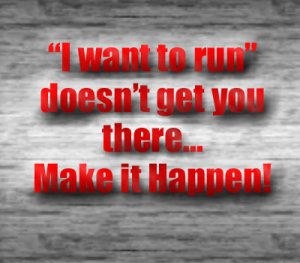March 31st, 2012
 The concept of running technique doesn’t often cross the minds of 1st time runners, and may never cross the mind of seasoned runner (excluding professionals.) Understanding some general concepts about running technique can make running a more pleasant experience. Sprinting and ”steady state” running cause for different body positions and big techniques. First time runners may try to attempt cardio the same way they sprint. This will cause the muscles to wear down at a higher rate, decreasing the amount of time or shorten the distance intended to cover.
The concept of running technique doesn’t often cross the minds of 1st time runners, and may never cross the mind of seasoned runner (excluding professionals.) Understanding some general concepts about running technique can make running a more pleasant experience. Sprinting and ”steady state” running cause for different body positions and big techniques. First time runners may try to attempt cardio the same way they sprint. This will cause the muscles to wear down at a higher rate, decreasing the amount of time or shorten the distance intended to cover.
1) Smaller steps (smaller strides), Shorter arm swings
Initially, 1st time runners may take off with long strides and big arm swings. This is incredibly inefficient. The body should naturally swing the arms. They need to be placed in the correct position. Bend the arms comfortably at the elbow and relax the shoulders. There is no need to add to the natural arm swing. The arm swing will be determined by the length of your stride. With that being said, keep the strides smaller than a sprint. As the body grows accustom to running, stride length may increase.
2) Don’t Heel strike
Allowing your heel strike may seem like the natural movement. However, it is not the most efficient. When your foot strikes the ground, it should land on the forefoot. Note: Do not confuse forefoot with the balls of your feet or toes. Landing forefooted means landing on the portion of the foot just in front of the heel. (It may require shorter steps.) Some books may consider this the front %70-85 of the foot. You may find yourself moving a little more smoothly. When landing forefooted you should hear and feel a softer landing. To help remember to land forefooted, be mindful of the sound and feel of your foot striking the ground. As people get tired, feet feel heavy and begin to strike the ground with heavier sounds. Noting the heavier foot strike, remind yourself to shorten your steps and land forefooted.
3) Upper body posture
Upper body posture is the hardest one to explain. Lean slightly forward (key word: SLIGHTLY.) Leaning back slows you down. Leaning slightly forward makes it easier to land forefooted. You may want to lean forward just enough to comfortably land forefooted, but not feel like you’re falling over.
